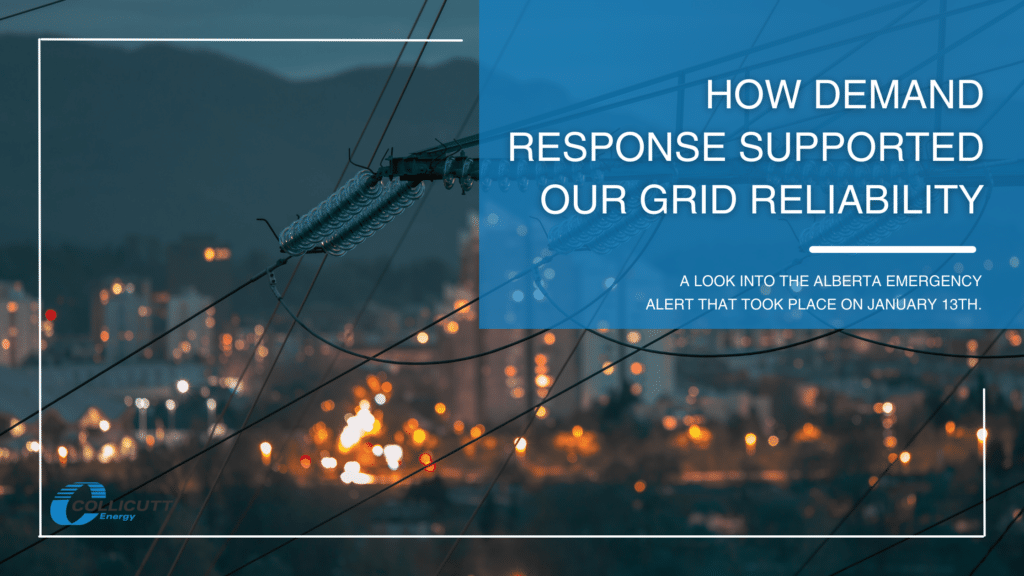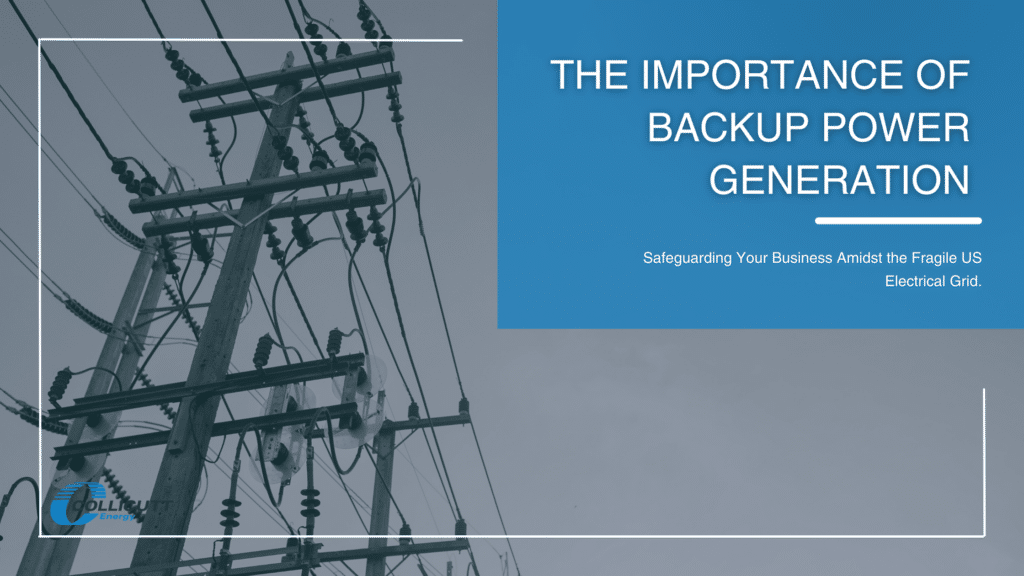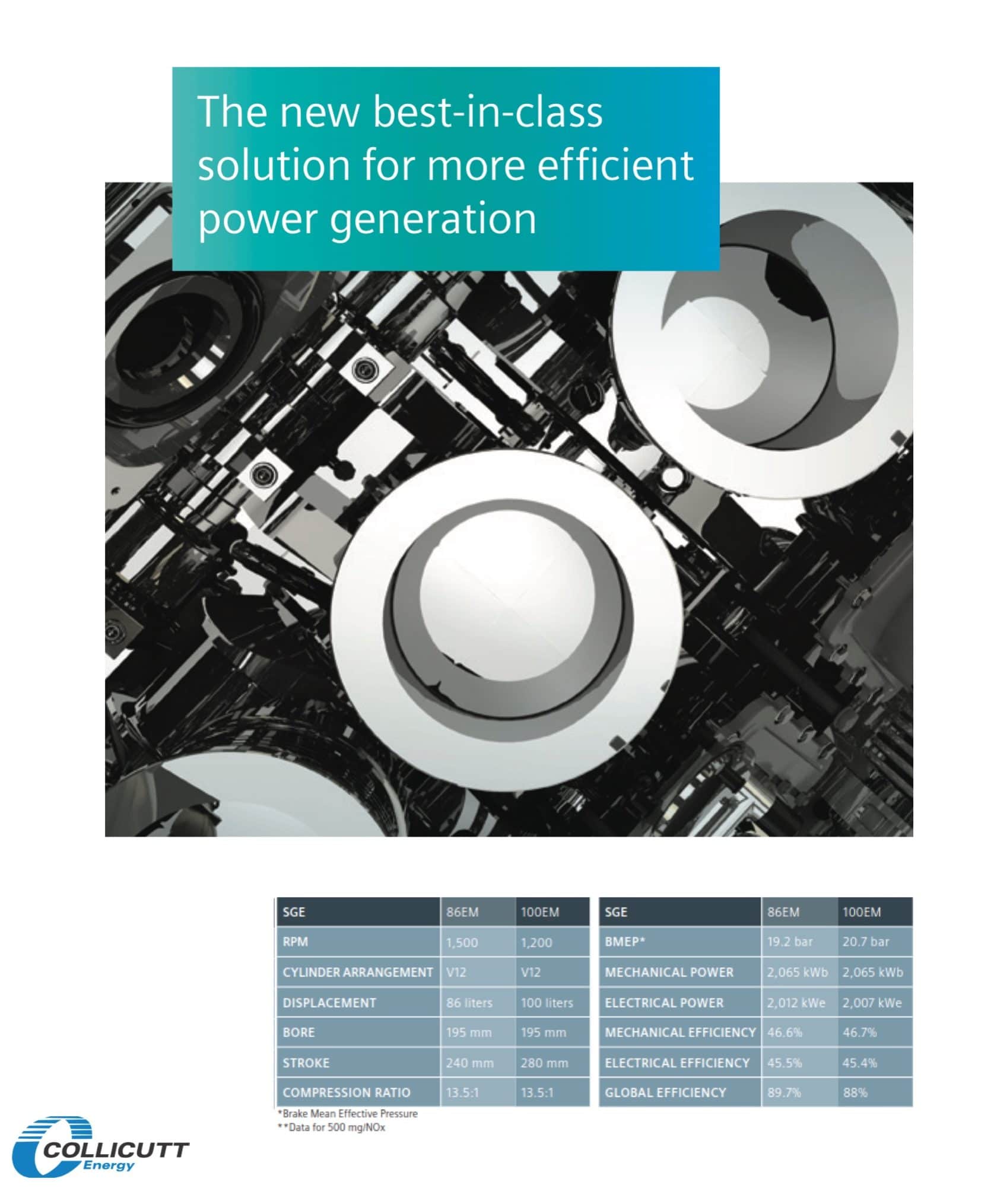On January 13th, I was sitting with my extended family watching the Hockey game. We celebrated every shot on goal for our team, and shrieked every time the other team almost scored. However, close to the end of the game the feed cut out and all of our phones in horrible harmony issued this obnoxious blaring noise: an Alberta Emergency Alert had been issued, because of a high risk of rotating blackouts.

Why did this alarm concern me?
This was deeply concerning! It was at least -30C and our house’s furnace was already struggling to keep up; we had an electric space heater in the living room helping keep that specific room warm for everyone.
Without power, we’d immediately lose our house lighting, the power to the space heater and potentially lose the power to our furnace ignition system. This would leave all 10 of us without any form of energy to stay warm.
What caused this grid alert?
- Problem 1: High Grid Demand – As you can see in image 2, There was a significant increase in power consumption within the province: The Alberta Electric System Operator (AESO) reported an Alberta Interconnected Load (AIL) of 11,802 MW, up from ∼10,500 MW earlier that day. The primary reason for the high load was the extremely low temperatures we were experiencing in the province.
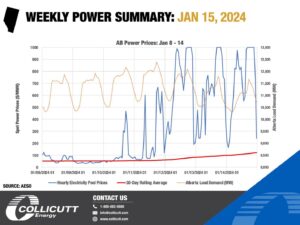
Image 2: Weekly Energy Summary posted on January 15th. Source (Linkedin). Graph shows how on January 13th, there was a marked uptick in power consumption around 6pm. At this time, power prices in the province shot up to the AESO price limit of $999/MWh, 10 times the 30-day rolling average at the time of $100/MWh.
- Problem 2: Loss of Generation in the Province – The larger issue that led to the emergency alert was the lack of available power generation in the province. As shown in Image 3, there was a significant lack of both wind and solar at the time of alert.
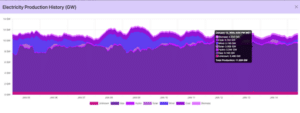
Image 3: Alberta electricity production by type (Source: Alberta Energy). Generation by natural gas made up 81.7% of power generation at the time of the emergency alert. At the time of the alert, Solar and wind provided 100MW of the 6,131MW of installed power generation as reported on AESO Supply page.
How Collicutt Energy Helped Support Grid Reliability
At Collicutt Energy Services, our primary business is ensuring reliable power to your facility; whether this is through onsite natural gas generation or backup standby diesel power.
During this grid emergency event, many of our clients responded to an AESO directive to reduce their consumption. This is referred to as ‘Demand Response’. Over the last year, we have been helping clients prepare for events like this by getting their facility set up with backup generation that could, at a moment’s notice, provide relief to the grid.
Over the weekend of January 12-14th, our customers helped provide seven hours of grid relief; two and a half of those hours occurring on January 13th.
FAQ
- Why did our clients participate in Demand Response?
A natural question many people would ask is “Why would a large industrial customer participate in Demand Response? especially if it could impact the production of that company?”
Great question – other than being a great corporate citizen, they were compensated for it.
In 2022, the average customer who participated in Demand Response (Also formally referred to as Operating Reserve: Supplemental Reserves) earned between $200-250,000 for every Megawatt they were able to curtail. So for a facility that consistently consumed 2MW and participated in Demand Response, they could earn as much as $500,000 for reducing load for approximately 20-30 hrs of the year.
- Can your facility participate in Demand Response?
With further deployment of renewables in Alberta and greater demand for electricity in the province, we are expecting more events like the grid emergency event of January 13th to happen in the future.
- Can I enroll my facility in Demand Response?
Here are the eligibility criteria:
- Are you consistently consuming 400kW or greater between 7 am and 11 pm?
- Can you reduce your power consumption within a 10 minute period?
If your answer to the above questions is yes, then your facility is eligible. Reach out to us.
About the Author

|
Matthew Swinamer is a mechanical engineer with APEGA. In Matthew’s role as Technical Sales Engineer, he works to help commercial and industrial clients understand the power of onsite generation to reduce utility costs and increase sustainability of their energy consumption. |

